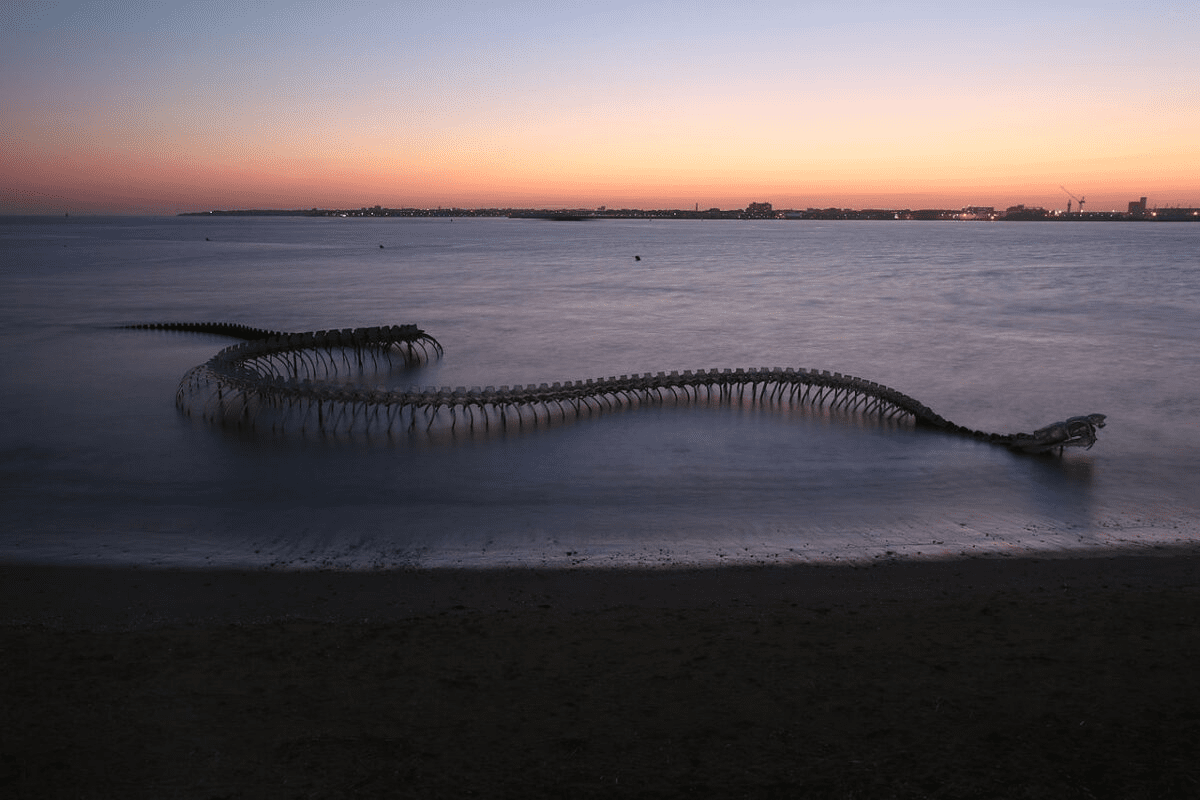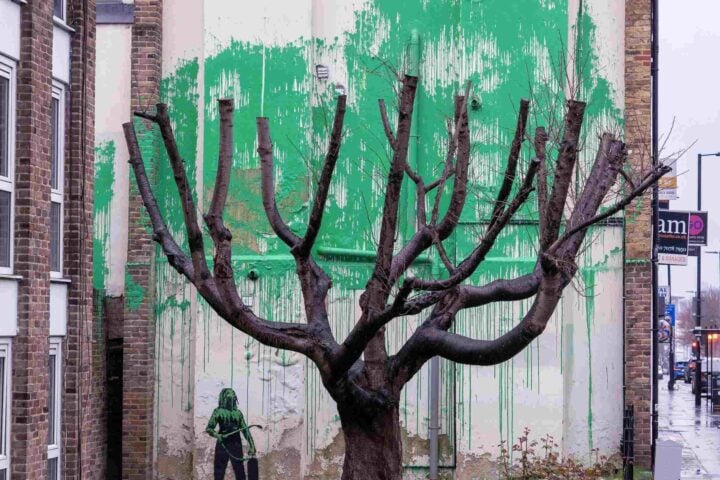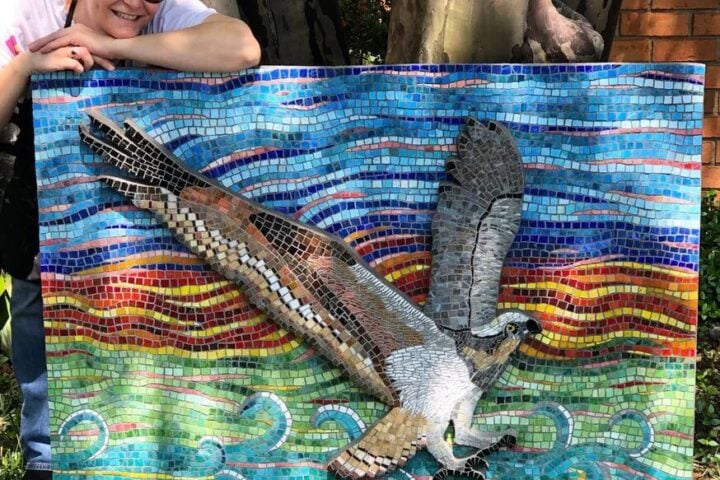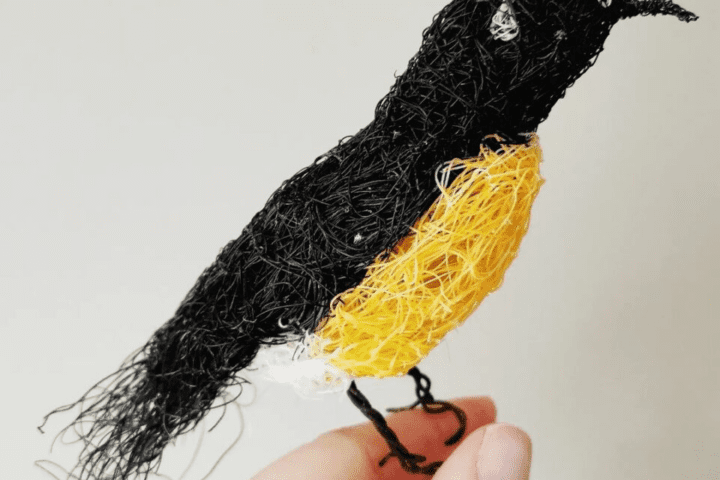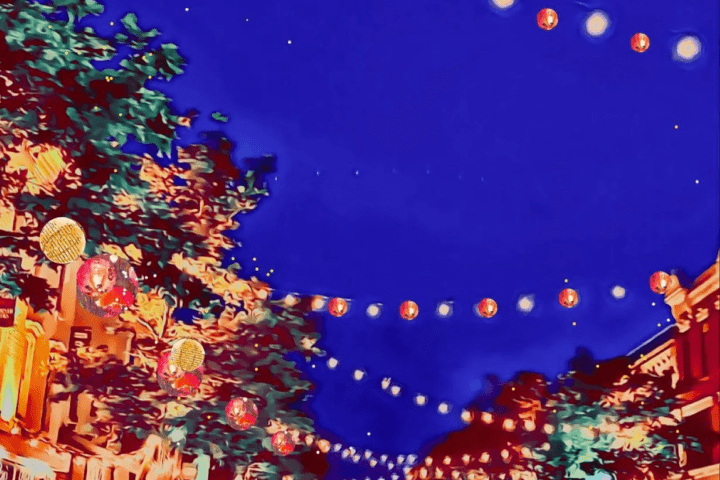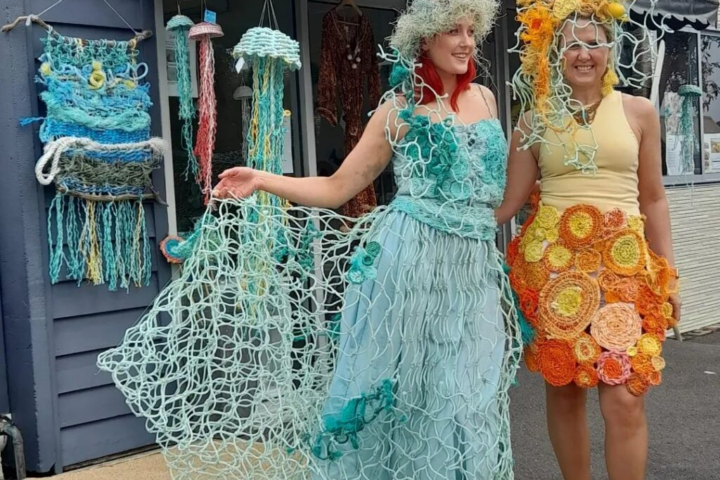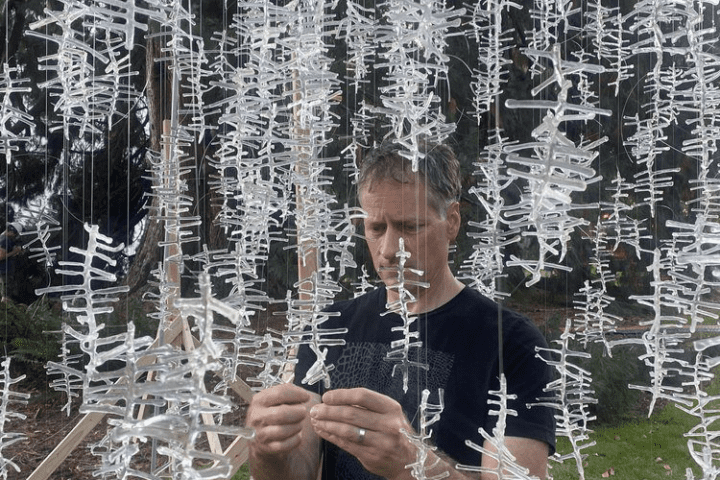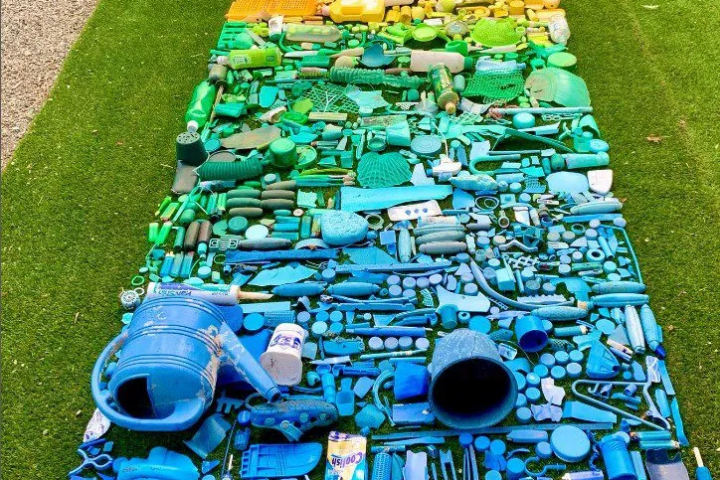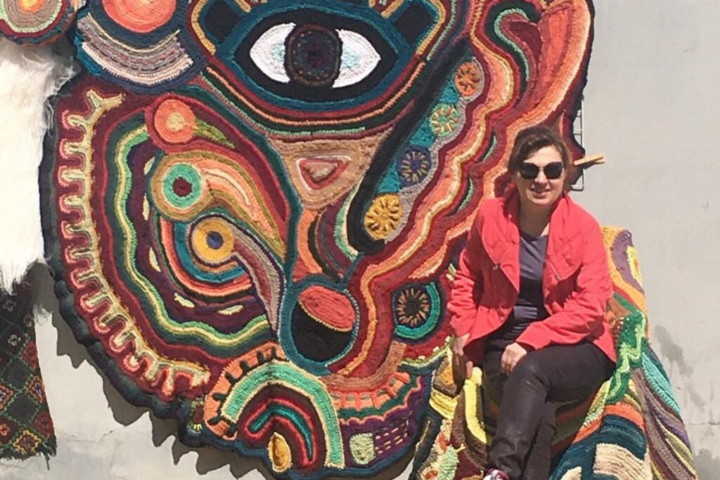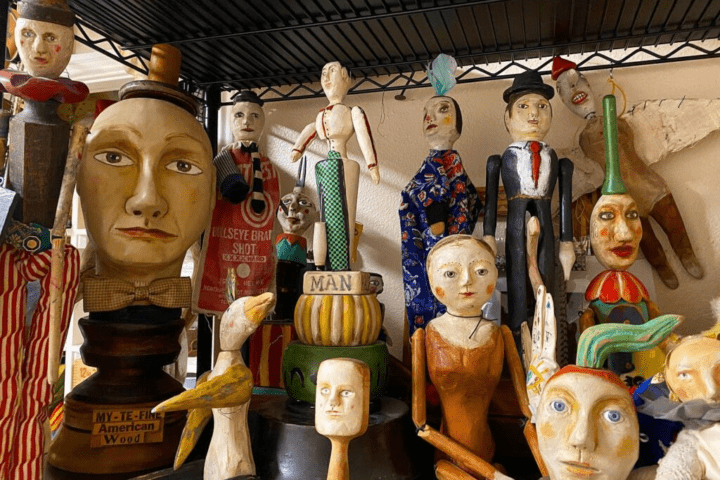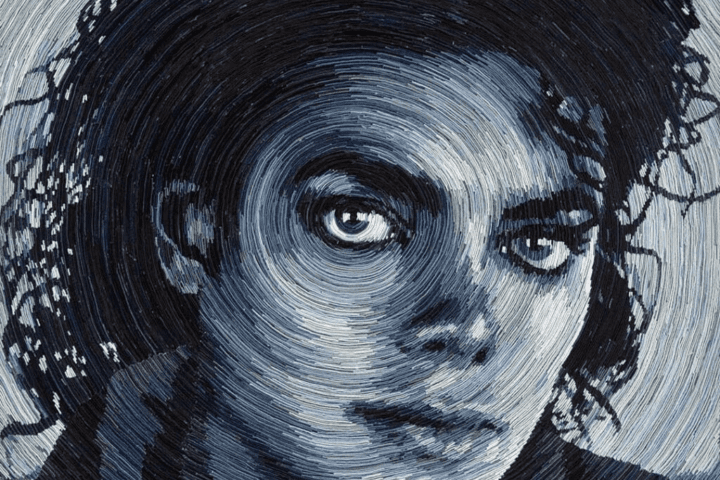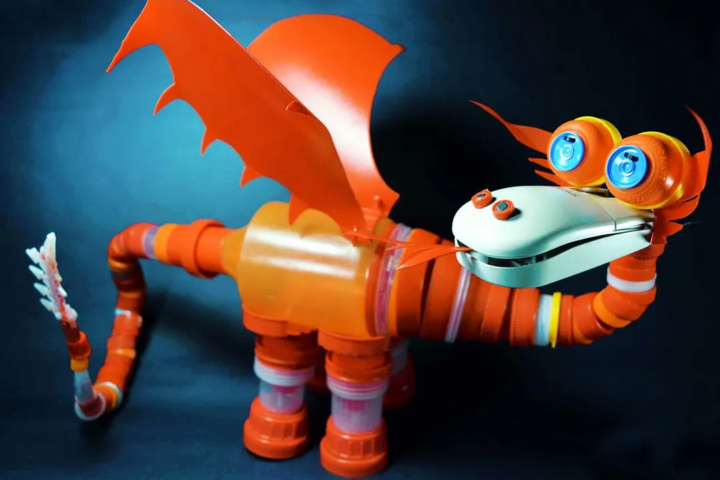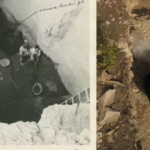Serpent d’Océan is an awe-inspiring and enigmatic art installation that stands as one of the most dramatic and mysterious creations in the world. Situated near the Loire estuary, close to Nantes, France, this colossal serpent sculpture is a sight to behold. The immense skeletal structure emerges from the water, beckoning tourists from all corners of the globe to capture themselves alongside this magnificent artwork. The level of intricacy and the sheer amount of time devoted to crafting this piece is truly remarkable. In 2012, the visionary French-Chinese contemporary artist Huang Yong Ping unveiled Serpent d’Océan on the shores of the Loire estuary. This monumental sculpture spans a length of 425 feet and undergoes a captivating dance of being concealed and revealed by the tides each day.
Huang Yong Ping was renowned for his boundary-pushing art installations that defied convention, bridged diverse cultures, and offered profound reflections on the human condition. His giant serpent sculpture was a testament to his artistic prowess. The sculpture evokes the aura of an archaeological find, seemingly harkening back to a primordial era. However, this astonishing piece was masterfully crafted by the hands of an eccentric French-Chinese artist. Completed in 2012, Serpent d’Océan now resides as part of the permanent public art collection of Estuaire. This mesmerizing structure undergoes a continual interplay of being veiled and unveiled as the tides ebb and flow. This constant transformation adds an element of intrigue and drama, heightening the allure of the sculpture.
Similar Post
Huang Yong Ping, the artist and creator behind Le Serpent d’Océan, emerged as a prominent figure in the Chinese avant-garde movement. Many of his works faced bans imposed by the Chinese government. In 1989, he made the decision to move to France, where he frequently explored themes of identity and cultural fusion in his art. Serpent d’Océan, completed in 2012, finds its home along the Loire estuary, encompassing a 37-mile-long shore. Crafted from aluminum, this colossal serpent emerges from the water, as if the ocean is unveiling an ancient fossil. In an effort to integrate the sculpture harmoniously with the surrounding landscape, Huang crafted the giant serpent to mimic the nearby Saint Nazaire bridge.
Notably, Huang’s artistic prowess extended beyond Serpent d’Océan. In 2016, he unveiled an even larger serpent for his Empires exhibition at the Grand Palais in Paris. This monumental serpent measured a staggering 787 feet in length and was encircled by 305 shipping containers, sparking contemplation on the topic of global trade. Huang Yong Ping’s art often delved into politics, aiming to elevate moral standards. Depicting aspects of human nature, he frequently employed animals and insects in his pieces. By introducing various animals and Chinese mythological creatures to the European art scene and landscape, he brought Chinese culture into new realms of artistic expression. Tragically, Huang Yong Ping passed away from a brain hemorrhage on October 19, 2019, at the age of 65. However, his legacy endures through his art, particularly exemplified by the giant serpent in the Loire estuary. Just as the tides continue their perpetual rhythm long after one life is complete, Huang’s artistic vision continues to captivate and inspire generations to come.
